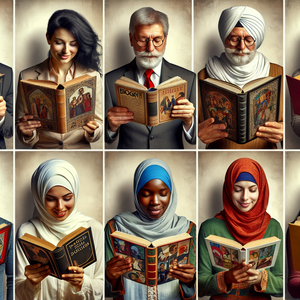The Gender Pay Gap in Sports: A WNBA Case Study

From its inception in 1996, the WNBA has faced challenges in gaining recognition and financial support. Early on, the league's players earned salaries that were a fraction of what NBA players made, often starting at around $30,000, compared to the millions earned by NBA stars. As of 2021, the maximum salary for a WNBA player was approximately $221,000, while the average NBA player earned around $10 million. This stark contrast highlights an ongoing issue where women's sports are undervalued despite their growing popularity and success. The disparity in salaries is further exacerbated by the difference in media coverage and sponsorship. The NBA has enjoyed decades of lucrative television deals and sponsorship agreements, which have allowed teams to invest heavily in player salaries. In contrast, the WNBA's media rights deals have historically been less lucrative, leading to a trickle-down effect on player compensation. For instance, while the NBA's broadcasting deals are worth billions, the WNBA's deals are comparatively modest, limiting the financial resources available for player salaries.
Cultural and Social Factors
Cultural perceptions of women's sports play a crucial role in maintaining the gender pay gap. Despite the increasing visibility of women athletes, many still face stereotypes that question their athleticism and marketability. This cultural bias often translates into reduced investment in women's sports, further entrenching the pay gap. According to a report from the Women's Sports Foundation, 80% of sports media coverage is dedicated to men's sports, which not only skews public perception but also affects sponsorship opportunities for women athletes. Moreover, social norms and traditional gender roles impact the level of support for women in sports. The notion that women's sports are less competitive or entertaining can deter potential fans and sponsors. This lack of support translates into lower attendance at games and diminished media interest, perpetuating a cycle of underfunding and underappreciation. This cultural context creates a challenging environment for female athletes seeking equity in compensation.
WNBA's Efforts to Address Inequalities
In recent years, the WNBA has taken significant strides to address the gender pay gap. The league's collective bargaining agreement (CBA), ratified in January 2020, marked a pivotal moment in its history, emphasizing player compensation and benefits. This agreement increased the salary cap and introduced performance bonuses, allowing players to earn up to $500,000 per year. This was a significant increase compared to the previous maximum salary, but it still pales in comparison to the earnings of their male counterparts. Additionally, the CBA provided improved maternity benefits and enhanced travel accommodations, acknowledging the unique challenges faced by women athletes. These measures reflect a growing recognition of the need for equitable treatment within the league. Prominent WNBA players like Maya Moore, Sue Bird, and Elizabeth Williams have also become vocal advocates for equity in sports compensation. They have used their platforms to raise awareness about the pay gap and to inspire change within the league and beyond. Their activism highlights the importance of visibility and representation in driving progress towards gender equity in sports. Moore, in particular, has taken a stand not only for athlete compensation but also for broader social justice issues, proving that sports and activism can coexist.
The gender pay gap in sports is a complex issue rooted in cultural, social, and economic factors. The WNBA serves as a poignant example of how these disparities manifest in the world of athletics. While significant strides have been made to equalize salaries and benefits for female athletes, there is still much work to be done. Continued advocacy, increased media coverage, and equitable sponsorship opportunities are essential for closing the pay gap. As the WNBA continues to grow and evolve, it holds the potential to not only transform women's sports but also challenge the broader societal norms that perpetuate gender inequality. By addressing these disparities head-on, the league can pave the way for future generations of female athletes to receive the recognition and compensation they deserve. The journey toward equity in sports may be long, but with ongoing efforts and increased awareness, the WNBA can lead the charge in closing the gender pay gap, setting a precedent for other leagues to follow.
Sports Marketing Manager
Sports leagues (e.g., WNBA, NCAA), sports marketing agencies, and media companies.
Core Responsibilities
Develop and implement marketing strategies to promote women's sports and increase visibility for leagues like the WNBA.
Collaborate with sponsors, media, and community organizations to create promotional campaigns that highlight female athletes.
Required Skills
Strong understanding of digital marketing and social media platforms.
Excellent communication and negotiation skills, with experience in brand management.
Sports Data Analyst
Professional sports teams, sports analytics firms, and sports technology companies.
Core Responsibilities
Analyze performance data of athletes and teams to provide insights that can influence coaching strategies and player recruitment.
Develop models to assess the impact of various factors on game outcomes and athlete performance.
Required Skills
Proficiency in statistical software (e.g., R, Python) and data visualization tools (e.g., Tableau).
Strong analytical skills with a background in mathematics or statistics.
Gender Equity Advocate in Sports
Non-profit organizations, sports leagues, and educational institutions.
Core Responsibilities
Conduct research and advocacy work focused on promoting gender equity in sports, including pay equality and representation.
Collaborate with organizations and stakeholders to create programs and initiatives that support female athletes.
Required Skills
Strong understanding of gender issues in sports and experience in advocacy or public policy.
Excellent written and verbal communication skills, with the ability to engage diverse audiences.
Sports Event Coordinator
Sports organizations, event management companies, and community sports programs.
Core Responsibilities
Plan and execute events that highlight women's sports, including tournaments, promotional events, and community outreach programs.
Manage logistics, budgets, and vendor relationships to ensure successful event execution.
Required Skills
Strong organizational and project management skills, with a knack for multitasking.
Experience in event planning and knowledge of sports management.
Social Media Manager for Sports Teams
Professional sports teams, marketing agencies, and sports media outlets.
Core Responsibilities
Create and manage engaging content for social media platforms to promote women's sports and connect with fans.
Analyze engagement metrics to refine strategies and increase follower base and interaction.
Required Skills
Strong knowledge of social media trends and best practices, particularly in the sports industry.
Excellent writing and storytelling abilities, with experience in graphic design or video editing preferred.


